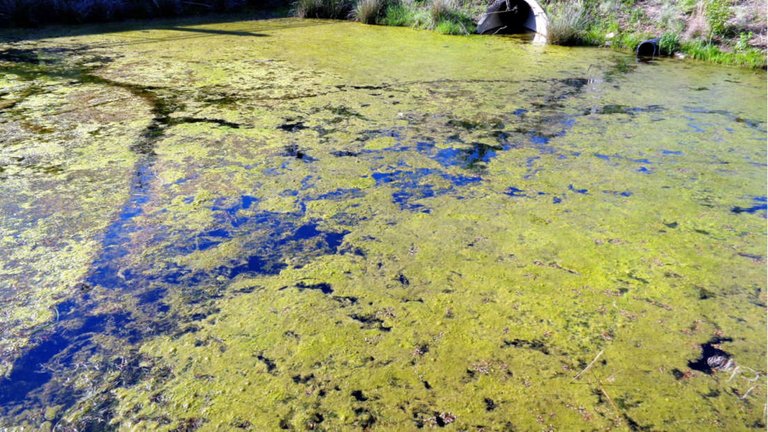
Half of the oxygen that we breathe comes from tiny organisms that live in the ocean. This tiny organisms are called Phytoplankton, they produce oxygen just like the land plants. Phytoplankton are not plants but they are protist.
They are so small that thousands of them can fit in a single drop of water.
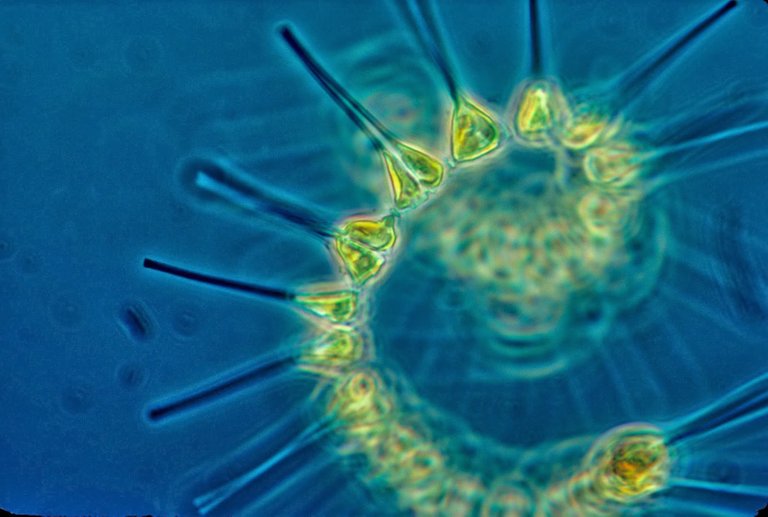
Phytoplankton depends on nutrients, proper temperatures and light to reproduce. Costal areas are the best areas for them, because of the nutrients that have been washed off the lands.

Phytoplankton 'prefers' costal areas more than open water. The Mississippi River is a perfect example of how nutrients run-off creates plankton blooms. 41% of the United States drain in to the Mississippi River and then in to the Gulf Of Mexico. That's about 3.2 million square kilometers of land. About 12 million people live in areas that border with the Mississippi River, and they constantly discharge sewage in to the rivers. 
Unfortunately, the majority of the Mississippi River's watershed is farm land. Each year tons of fertilizers end up into streams and rivers. Most of the urban and farm discharge include Nutrients such as phosphorus and nitrogen.
Those nutrients are important for the Phytoplankton's growth. About 1,7 million tons of nutrients are dumped in to the Gulf Of Mexico each year. Once the Gulf receives the huge influx of nutrients, the plankton blooms in numbers.
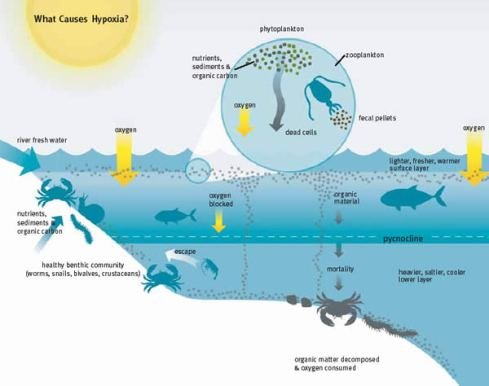
This bloom results in an area called dead zone.
The Dead Zone is an area with such low oxygen concentration, that only few organisms can survive.
Hypoxic conditions are being created by bacteria that decompose that nutrients. The difference between the water densities of Mississippi and salt water from the Gulf, create bariers that prevent the mixing between the surface and deep waters. This prevents the oxygenation of the waters and creates the Dead Zone.
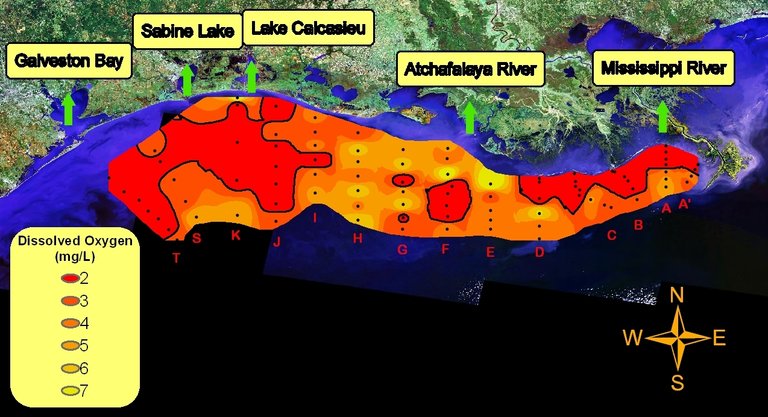
During the falls and winters, the winds stir up the waters and helping the layers mix, replenishing the oxygen levels and allowing the fish populations to grow. This happens every year in the early summer.
The National Oceanic and Atmospheric Administration predicts that the dead zone will grow approximately in the size of New Jersey. That’s a 57 percent increase in just one year.
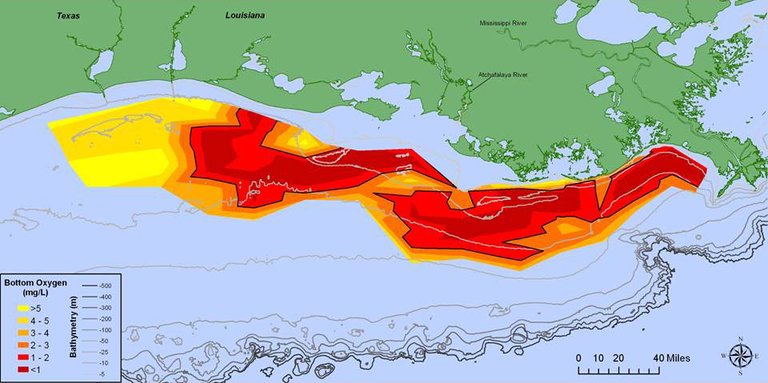
Thanks for reading! Feel free to follow, vote and Re-esteem if you find it useful. You can find more of my articles here:https://steemit.com/@sungazer13
Source: HERE